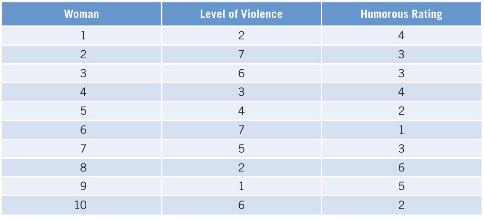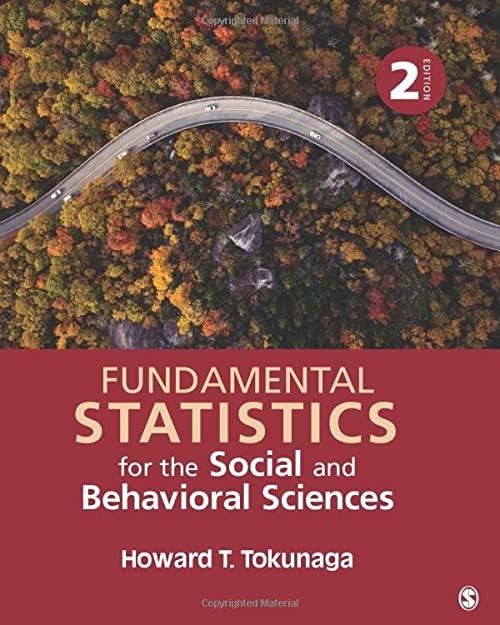What makes a joke funny? Sigmund Freud's research led him to theorize that people find jokes funnier
Question:
What makes a joke funny? Sigmund Freud's research led him to theorize that people find jokes funnier when the jokes contain higher levels of sexuality or hostility. Kirsh and Olczak (2001) questioned whether gender affects this relationship between humor and hostility by measuring men's and women's reactions to comic books of differing levels of violence. The following data are representative of the women in their study. The researchers hypothesized that, because women find violence less humorous than do men, there is a negative relationship between the level of violence in a comic book ( \(1=\) low to \(7=\) high \()\) and how humorous women rate the comic book \((1=\) not at all humorous to \(6=\) extremely humorous). In other words, the higher the level of violence in the comic book, the less humorous the comic is to women.
a. Draw a scatterplot of the data.
b. Calculate descriptive statistics (the mean and standard deviation) for the two variables.
c. State the null and alternative hypotheses \(\left(\mathrm{H}_{0}\right.\) and \(\left.\mathrm{H}_{1}\right)\) (use a nondirectional \(\mathrm{H}_{1}\) ).
d. Make a decision about the null hypothesis.
(1) Calculate the degrees of freedom \((d f)\).
(2) Set alpha \((\alpha)\), identify the critical values, and state a decision rule.
(3) Calculate a statistic: Pearson correlation \((r)\).
(4) Make a decision whether to reject the null hypothesis.
(5) Determine the level of significance.
(6) Calculate a measure of effect size \(\left(r^{2}\right)\).
e. Draw a conclusion from the analysis.
f. Relate the result of the analysis to the research hypothesis.
Step by Step Answer:

Fundamental Statistics For The Social And Behavioral Sciences
ISBN: 9781506377476
2nd Edition
Authors: Howard T Tokunaga




